Beat the slump: How to prevent shoulder pain while cycling - a physio's advice
The combination of desk-work and road riding can wreak havoc on your posture. But it is possible to beat the slump - here’s how…
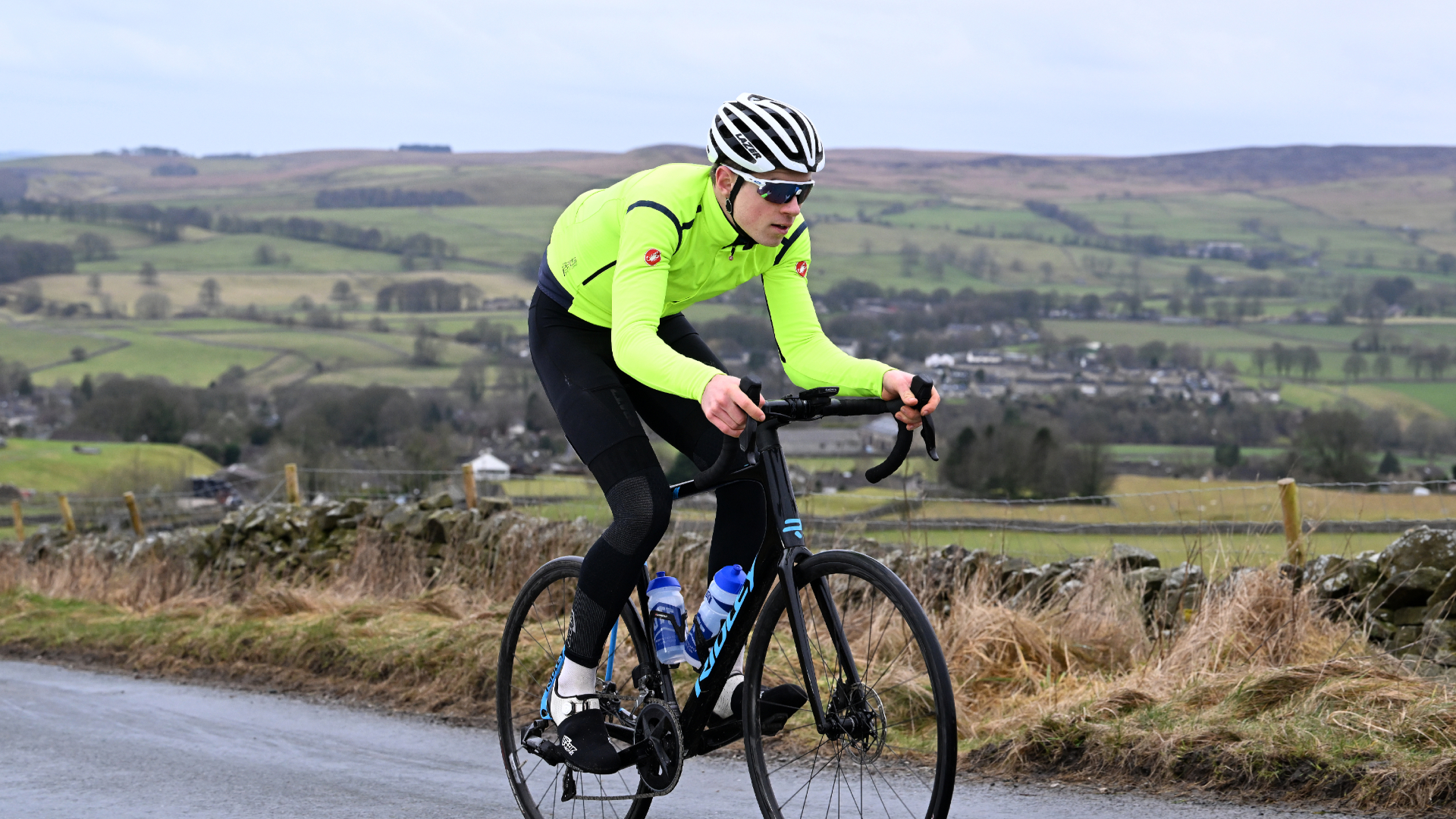

Most cyclists know that stretching is important – particularly the hip flexors, hamstrings and glutes. But how many of us pay attention to our shoulders and middle back?
Adopting a traditional road cyclist’s pose on the bike can cause a rounding of the shoulders and tightness in the thoracic spine – the section between the neck and bottom of the rib cage. The same areas are affected by desk work, an activity which dominates the days of many amateur riders.
“Anyone who spends most of their day at a desk needs to do something that takes them out of that position. That’s a problem for a lot of amateur cyclists - because their exercise is in the same position,” explained VeloPhysio's Nichola Roberts, who treats cyclists via bike fits as well as physiotherapy.
What problems are caused by a tight upper back?

The interconnectivity of the spine means that tight and rounded shoulders can have a ricochet effect throughout the body.
Roberts explains that most people sit with a posterior rotated pelvis, where the front of the pelvis rises and the back of the pelvis drops backwards. This causes the mid back to round and throws the shoulders forwards, into a hunch.
"Once you stiffen into that position it’s very difficult to move out of it and get extension through the top of the spine. Without that extension, you can't achieve a forward tilting pelvis," says Roberts.
If the pelvis won’t rotate correctly beneath you, once you get on the bike you'll have to curve through the upper back to reach the handlebars, creating a vicious cycle of discomfort which is hard to break out of.
The latest race content, interviews, features, reviews and expert buying guides, direct to your inbox!
If the mid back isn't moving correctly, it will affect the neck and lumbar spine (lower back), which in turn can lead to problems with the pelvis, sometimes presenting as a misalignment and leg length discrepancy - not ideal for cyclists strapped into a symmetrical and rigid bike.
“Tightness in the thoracic spine also really affects digestion, and breathing – because it stops the ribcage being able to move as it should. It can also lead to headaches, pins and needles when cycling, and disc problems,” added Roberts.
How to address cycling shoulder pain
We’ve established that a healthy back requires mobility throughout the spine, including the upper area. But how do we go about it? According to Roberts, it comes down to stretching and finding alternative exercise, bike fit, and desk set up.
1. Stretching and alternative exercise
Getting out of the flexed position is essential.
“Movement is key, cycling puts us in same position as the desk so we need alternate exercises that encourage extension and rotation of the mid-back - swimming, yoga and pilates are all great options, anything that you enjoy and which gets you moving. Doing something once or twice a week can really help.
“Even a a simple stretch or yoga routine every morning can make a difference. Or going to the gym, just putting the bar on your back and doing a squat takes you out of that static position,” Roberts said.
Roberts also suggests stretching the hamstrings, mid-back and shoulders as well as strengthening the all-important core.
“Working on core strength will allow the body to hold a lengthened position, without relying on locking the elbows and hunching the spine” – that has the added benefit of improving aerodynamics, too.
2. Bike set up
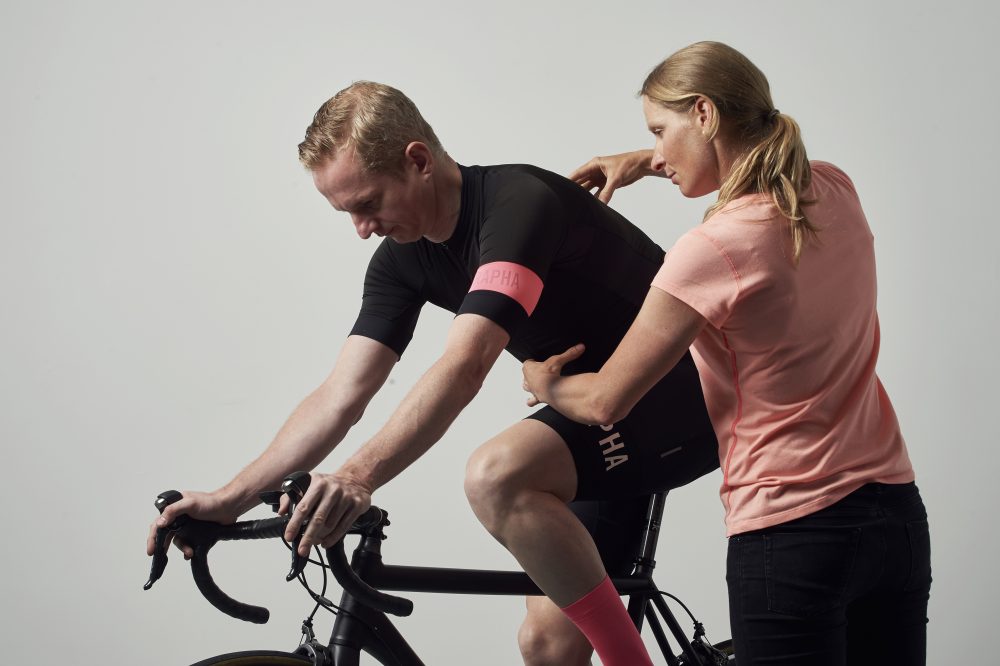
Nichola Roberts demonstrates correct set up to avoid shoulder pain when cycling
Though the body needs to come first, if the bike isn’t right it’ll exacerbate the problem. The saddle and reach to the bars are worth looking at.
“The bike saddle is important. If it’s uncomfortable, there will be tendency to roll pelvis backwards to alleviate the delicate soft tissues, leading to excessive flexion of the top of the spine and consequently locked elbows leading to loading and pain of shoulders and neck when riding.
“Overreaching on a bike that’s too large, handlebars that are too wide or a stem that’s too long can cause stress on the upper back. For women [or anyone with small hands] reaching for brake callipers can also be an issue,” says Roberts.
“A reach that’s too short could also be a problem. You see it often in people from a mountain bike background, they’re more upright on the bike – to reach the handlebars, they sit square through the sit bones and curl though the top. They need to learn to tilt the pelvis, and extend through the spine.”
3. Desk set-up
Before setting up VeloPhysio, Roberts’ job involved assessing workplace positions, and she’s adamant that anyone who spends a lot of time in a static pose needs to take a look at their set-up.
“The body reflects what we do the most of. If we are sitting at our desks hunched, rotated, with legs crossed - it will be reflected on the bike, with pelvic imbalances, rotation on the saddle. This can present as unequal power through the pedals or lead to knee pain, lower back pain or saddle sores, not to mention neck pain and shoulder pain.
“Problem areas include people sitting with their legs crossed, reaching for a mouse, looking at multiple screens – all these things cause a rotation in the back. You need to make sure you’re sitting square, properly on your sit bones. If you can have a workstation assessment, do – and I’m a big fan of standing desks.”
Testing TRX to address cycling shoulder pain
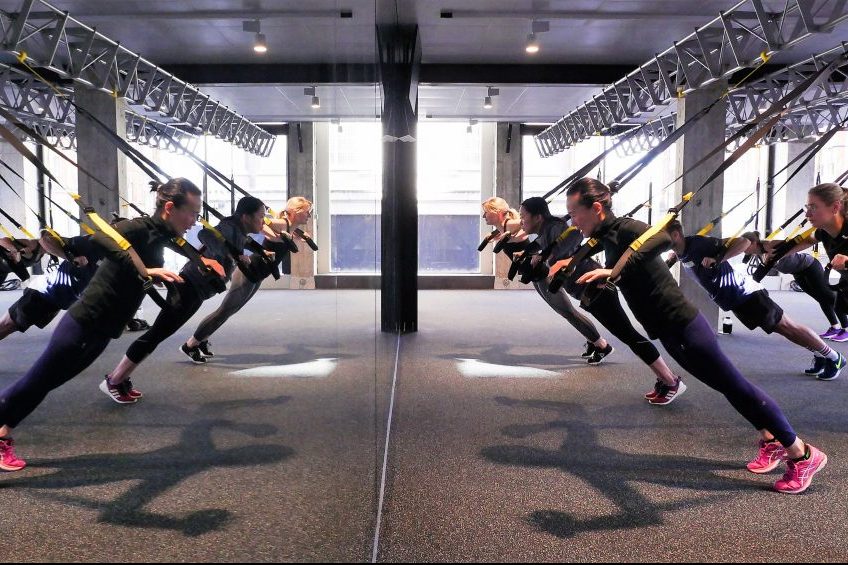
Anything which gets you out of that hunched over position is a great start on the road to loosening up an immobile upper back - and TRX - exercises completed using straps suspended from the ceiling, can certainly do that.
We had a go at a class geared towards stretching out the shoulders and strengthening the core, at newly opened TRX (and spinning) studio Body Machine, in Kensington.
TRX coach Dr Frances Mikuriya told us: "Cyclists are constantly hunched over on the bike, and then can do the same thing in the office hunched over a desk. TRX allows you to do a lot of chest and shoulder stretches to address this."
"A lot of people find that from doing TRX directly after, they recover faster after spinning."
Trying out the 'T Fly', 'Y Fly' and chest press certainly had us grimacing through the stretch - perhaps even more so than the areas we'd expect to feel tight, like the hip flexors.
There's an infinite number of exercises you can complete using TRX bands - such as planks, side planks and roll outs - which require bracing and stability through the core.
These will help riders to hold an aerodynamic position without rolling through the shoulders, instead softening the elbows to lean over the front of the bike.
"People have told me they cycle better after using TRX, because they learn to really use their core. When you do everything with controlled movement and optimum form, you're really engaging more muscles," Mikuriya said.
Foam roller exercises to address cycling shoulder pain
Foam rolling can be pretty painful when you're using the cylindrical tool to iron out aches across areas like the IT band, quads and calves. However, used on the upper back it can be a great relaxation aid, helping to realign and straighten out the spine.
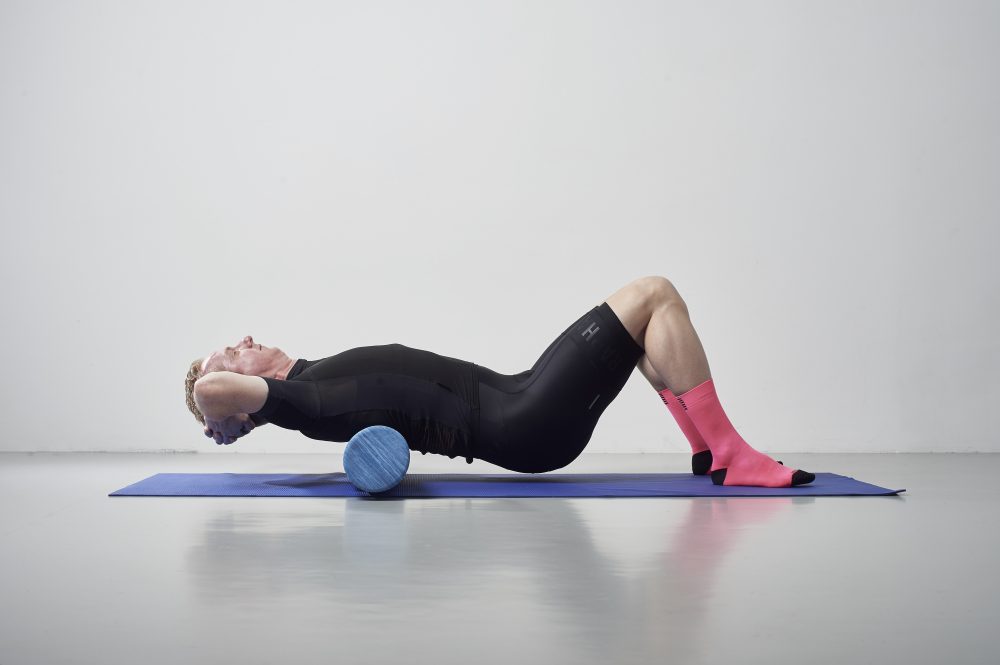
Lie on the roller, starting around your waist, and move along it smoothly until you reach your shoulders - stop at any point that feels particularly tight and wait there until you feel the muscles relax.
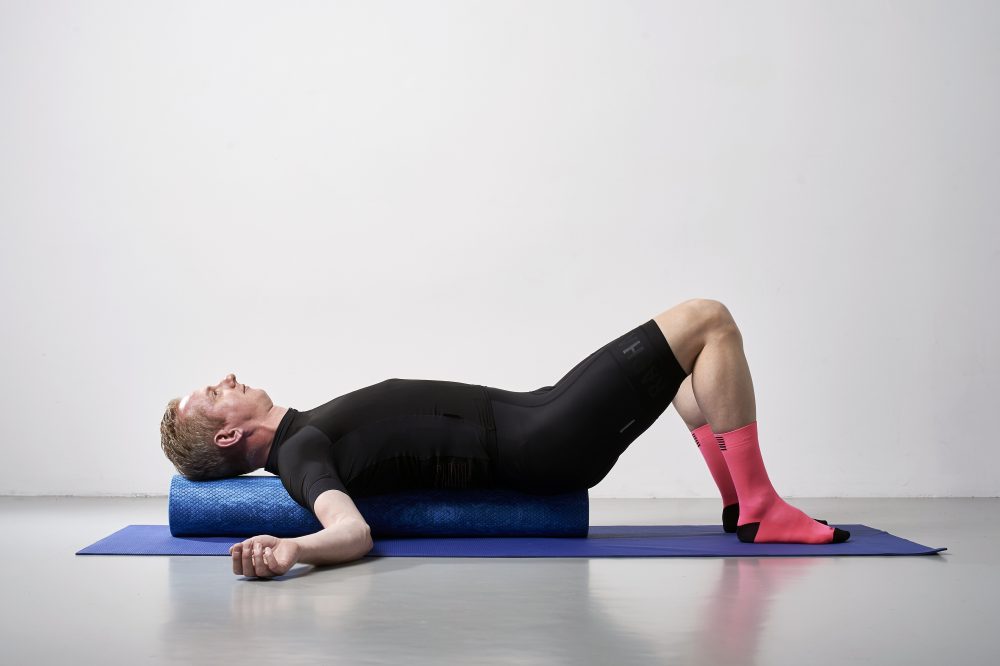
Turn the roller round, and place it down the centre of your spine. Drop your hands to the side and feel the stretch across your chest.
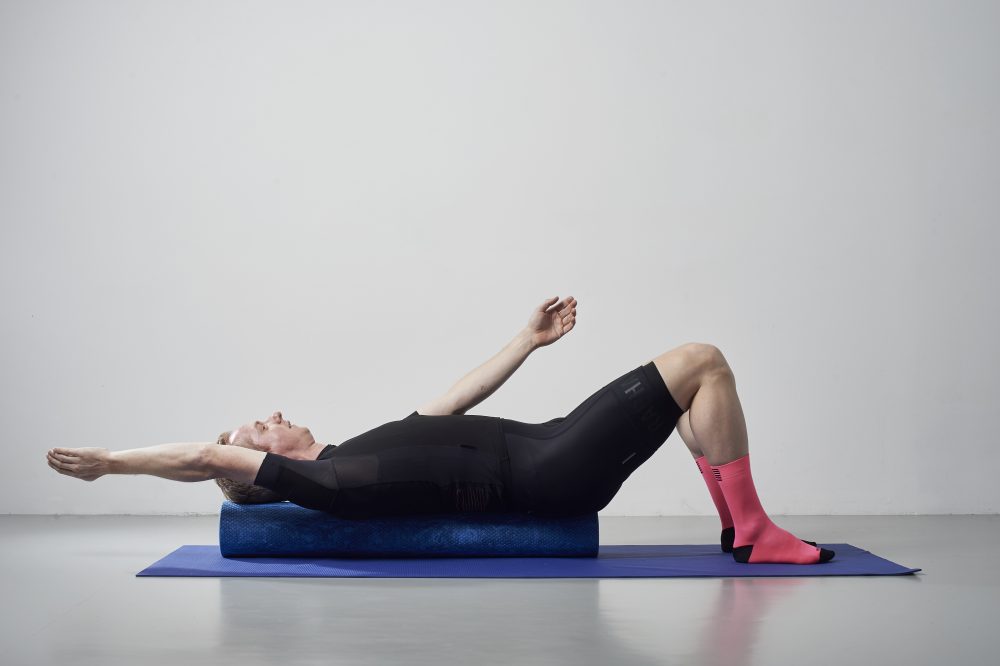
From this position, place your hands out in front of you and swing them back and forth, aim to touch the corners of the room, extending through the middle back and shoulders.
Michelle Arthurs-Brennan the Editor of Cycling Weekly website. An NCTJ qualified traditional journalist by trade, Michelle began her career working for local newspapers. She's worked within the cycling industry since 2012, and joined the Cycling Weekly team in 2017, having previously been Editor at Total Women's Cycling. Prior to welcoming her first daughter in 2022, Michelle raced on the road, track, and in time trials, and still rides as much as she can - albeit a fair proportion indoors, for now.
Michelle is on maternity leave from April 2025 until spring 2026.
